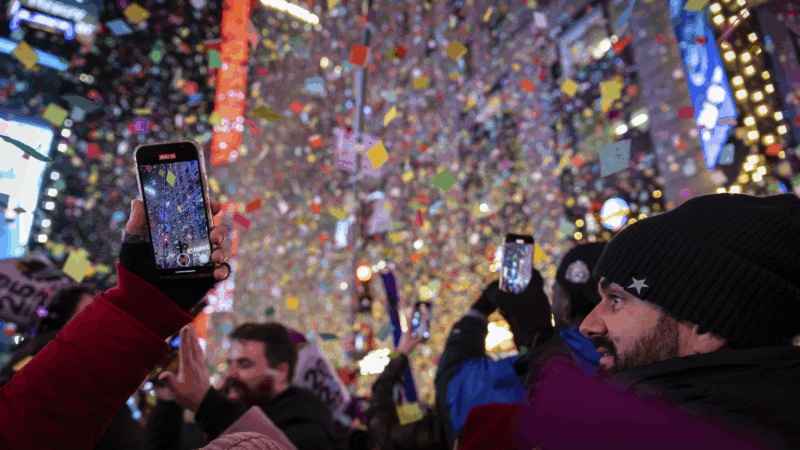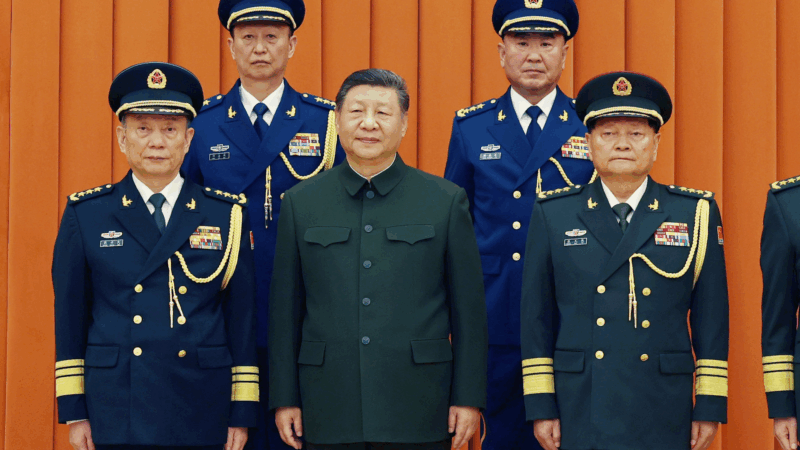Buddhist Art in Birmingham
No, they’re not crickets. They’re ancient tools known as chakpus ‘ hollow, metal rods shaped like funnels. In the museum lobby, as onlookers come and go, seven Buddhist monks lean across a wide circular table, using the funnels to create a colorful design from grains of dyed sand. By working morning to evening, over six days, the artists are creating an intricate, ritual sand painting called a mandala. Visitors to the museum stand around the center of activity in a loose circle, seemingly transfixed by what they’re seeing. Some of them shake their heads in disbelief at the meticulous nature of the work..
Female Visitor: ‘I think it’s amazing…I love the colors and the detail in the designs. They’re so detailed and intricate. It takes a lot of patience…
Male Visitor: ‘These gentlemen have an enormous amount of patience. My friend was asking, ‘I wonder if their backs hurt’ while they’re leaning over the table doing their intricate work. I imagine they just get used to it…’
Female Visitor: ‘In ’97 I watched and was fascinated, and so here I am again, today. There are no cell phones in this place, and I love it..’
Peace ‘ serenity ‘ that’s what the monks hope their art brings to Birmingham. Ranging in age from about 20 to 65, the monks come from the Drepung Loseling Monastery…originally founded in Tibet, but since 1959 operating in India after a purge by the Chinese government. One of the younger members, Tenzin Legden, explains the purpose of the sacred mandala:
Legden: ‘A mandala mainly symbolized the impermanence of all conditions, things’ if you truly understand the impermanent nature of life, it seriously turns our minds toward spiritual practice, you know?
The monks’ visit to Birmingham is part of the Museum’s exhibition called “Desire and Devotion: Art from India, Nepal, and Tibet.” And though some of the objects in the show are two thousand years old, the sand painting that the monks are creating will have a much shorter life span…to be exact, six days.
Last Sunday, to the sounds of chanting and singing, drums and horns, the monks consecrated the space in the museum lobby where the painting would be made. Tomorrow, at 2:30 p.m., that same music will fill the lobby again as the monks destroy their painting. They’ll sweep the sand grains into a bowl, and then sprinkle them into the nearest body of water, in hopes that the healing energy they’ve put into the project will spread and help a troubled world. Although that concept goes against the grain of American thought, museum visitor George Smith say it doesn’t bother him that the work of art he’s watching will have so short a life:
George Smith: ‘The reason for this being here is why I came… understanding the impermanence of all things. They can spend so much effort doing it, but then it gets to disappear, because that’s what life is…’
For most visitors, the exhibit of sacred Hindu and Buddhist art is a sort of window onto a strange and exotic culture. But for some Alabamians, it’s a celebration of a culture and a religion that’s already familiar to them…because they’ve made it their own. At least three Buddhist congregations…known as sanghas …meet regularly in the Birmingham area. And several more are scattered throughout the state, from Fort Payne in the north to Fairhope on the Gulf Coast. Numbers are hard to come by: there’s no centralized church authority, and many congregations don’t keep membership records. But most estimates put the number of Buddhists in America today at between two and three million…a figure that’s more than ten times the Buddhist population of about 200 thousand in 1960.
One local sangha member…Michael Huebner recently moved to Birmingham from Austin, Texas, where he belonged to a sangha with some 120 members. Huebner says there may be fewer Buddhists in Birmingham, but the congregations here are active and growing:
Huebner: ‘It’s not as big here as in ‘hip’ Austin, Texas (laughs), but is growing. And a large part of that is due, I believe, to the Drepung Loseling monks who are increasing the awareness in this city… ‘
On a recent night, a local Buddhist group of about a dozen people begin their weekly meeting with chanting and prayers. They’re led by Tenzin Deshek — a monk who moved to Birmingham last year. Deshek says that after a lifetime in India, teaching Buddhism in America has been an adjustment for him.
Deshek: ‘It’s very different, because here, America, you know, everybody’s very educated…so therefore they ask a lot of questions. Many questions. I really appreciate that. I really enjoy it here.’
After the meeting, as the group shared Chai tea and poppyseed cakes, members Stephanie and Adam Pierce, Jo Lynn Orr and Josh Crow said that although their chosen religion is still far from the American mainstream, it plays a crucial role in their lives.
Stephanie Pierce: ‘Not only does the religion stress compassion, but it gives you techniques,` a sort of technology, to achieve that in your heart. On one level it’s very simple, but the technology of Buddhism can get to be complex…and because of that, it’s very, very beautiful and rich.’
Adam Pierce: ‘ The whole focus is about being a better person, and i think that’s what’s most attractive to me about it. there’s many things…some of it do with just the logic of the religion, that it does rely on logical precepts to teach its spirituality. it encourages you to search and question, and listen and learn.’
Jo Lynn Orr: ‘The other thing, to me, that’s most important about Buddhism is what the Dalai Lama refers to as having ‘a warm heart’…to care for other people, and be a more peaceful person. A more forgiving person. In today’s world when there’s so much pain, so much suffering, so much anger and war and misunderstanding, having a warm heart is probably one of the most important things you could ever achieve.’
Josh Crow: ‘I’m still finding the path. I’m seeking the path every day.’
Michael Huebner is also seeking the path ‘ but with an eye for the arts. Huebner’s a fine arts writer for The Birmingham News.
Huebner: ‘As a writer of the arts, the ritual aspect of Buddhism appeals to me. If you look at the iconography in the paintings, in particular the mandala, it’s quite attractive and very complex. It takes a while to sort it out. You really have to stare at it, a while. Anyone who’s going down to the exhibit, I encourage you to take a long time… ‘
The exhibit ‘ Desire and Devotion: Art from India, Nepal and Tibet ‘ runs through May 25th at the Birmingham Museum of Art. The Mandala ritual sand painting experience will culminate tomorrow at 2:30 when the monks sweep the sand into a bowl for deposit into a local waterway.
A ‘very aesthetic person,’ President Trump says being a builder is his second job
President Trump was a builder before he took office, but he has continued it as a hobby in the White House.
Electric vehicles had a bumpy road in 2025 — and one pleasant surprise
A suite of pro-EV federal policies have been reversed. Well-known vehicles have been discontinued. Sales plummeted. But interest is holding steady.
Why do so many people ring in the new year on Jan. 1?
Much of the world follows the Gregorian calendar, named after Pope Gregory XIII, who put the finishing touches on a Roman system that integrated ideas from other cultures.
Teens are having disturbing interactions with chatbots. Here’s how to lower the risks
Teen use of AI chat bots is growing, and psychologists worry it's affecting their social development and mental health. Here's what parents should know to help kids use the technology safely.
Pipe bomb suspect told FBI he targeted U.S. political parties, memo says
The man accused of placing two pipe bombs in Washington on the eve of Jan. 6, 2021 told investigators someone needed to "speak up" for people who believed the 2020 election was stolen, prosecutors said Sunday.
Chinese military stages drills around Taiwan to warn ‘external forces’
The drills came after Beijing expressed anger at U.S. arms sales, and a statement by Japan's prime minister saying its military could get involved if China were to take action against Taiwan.







